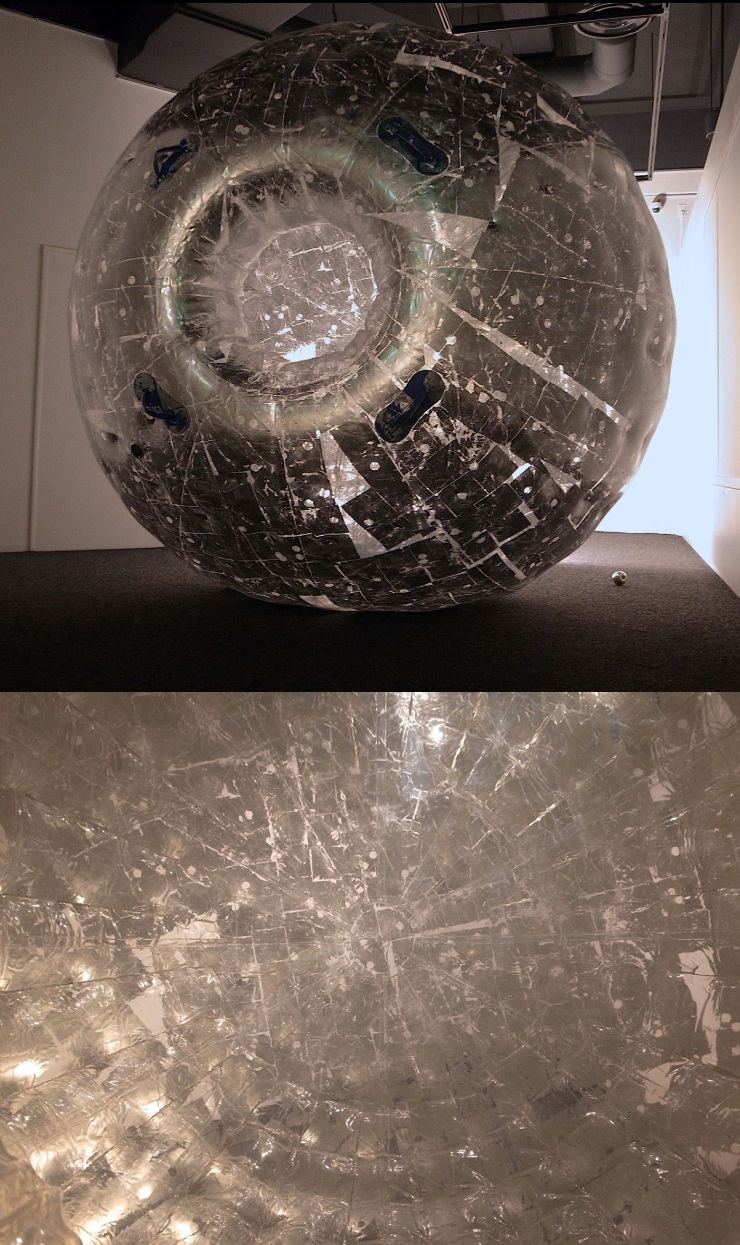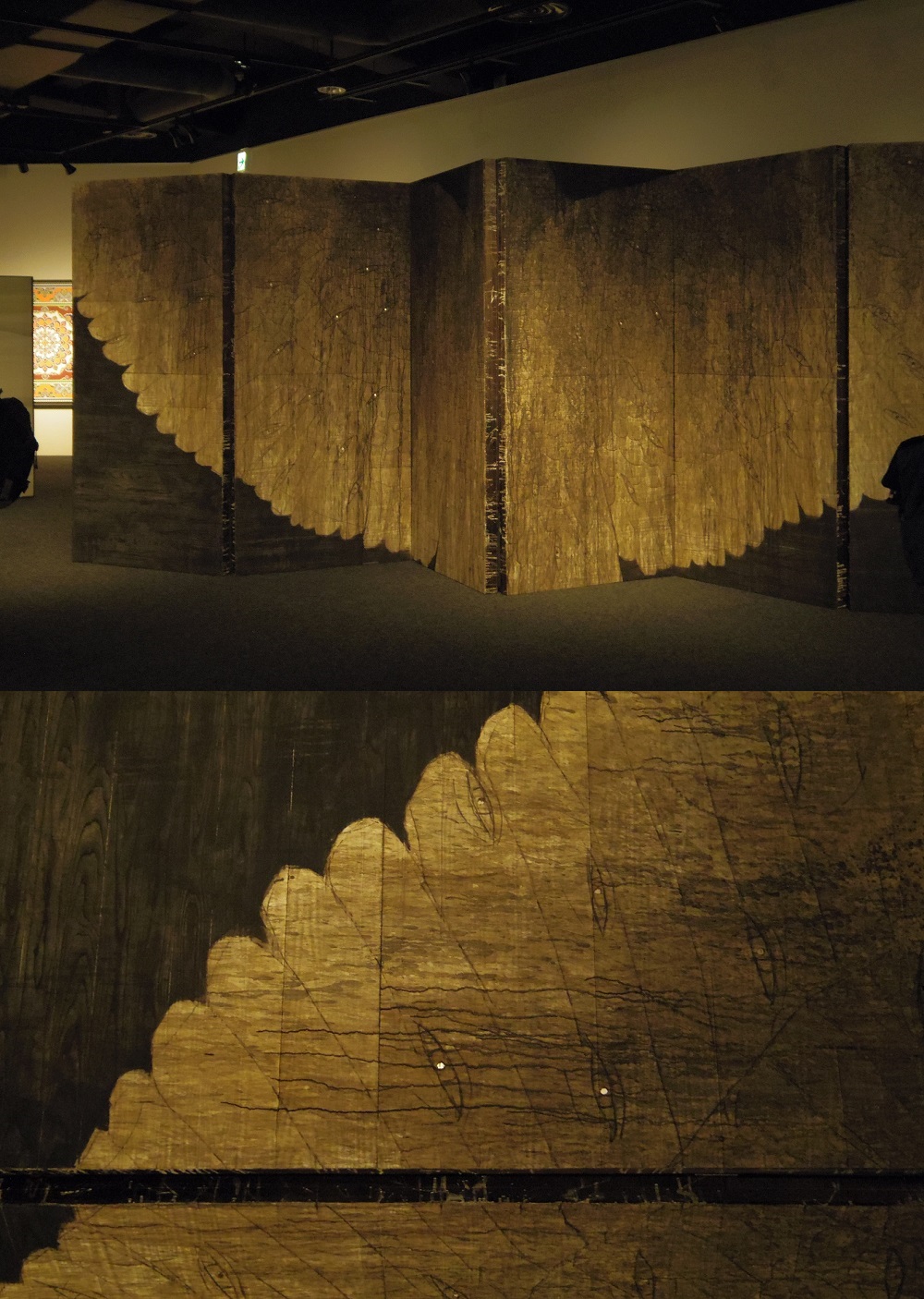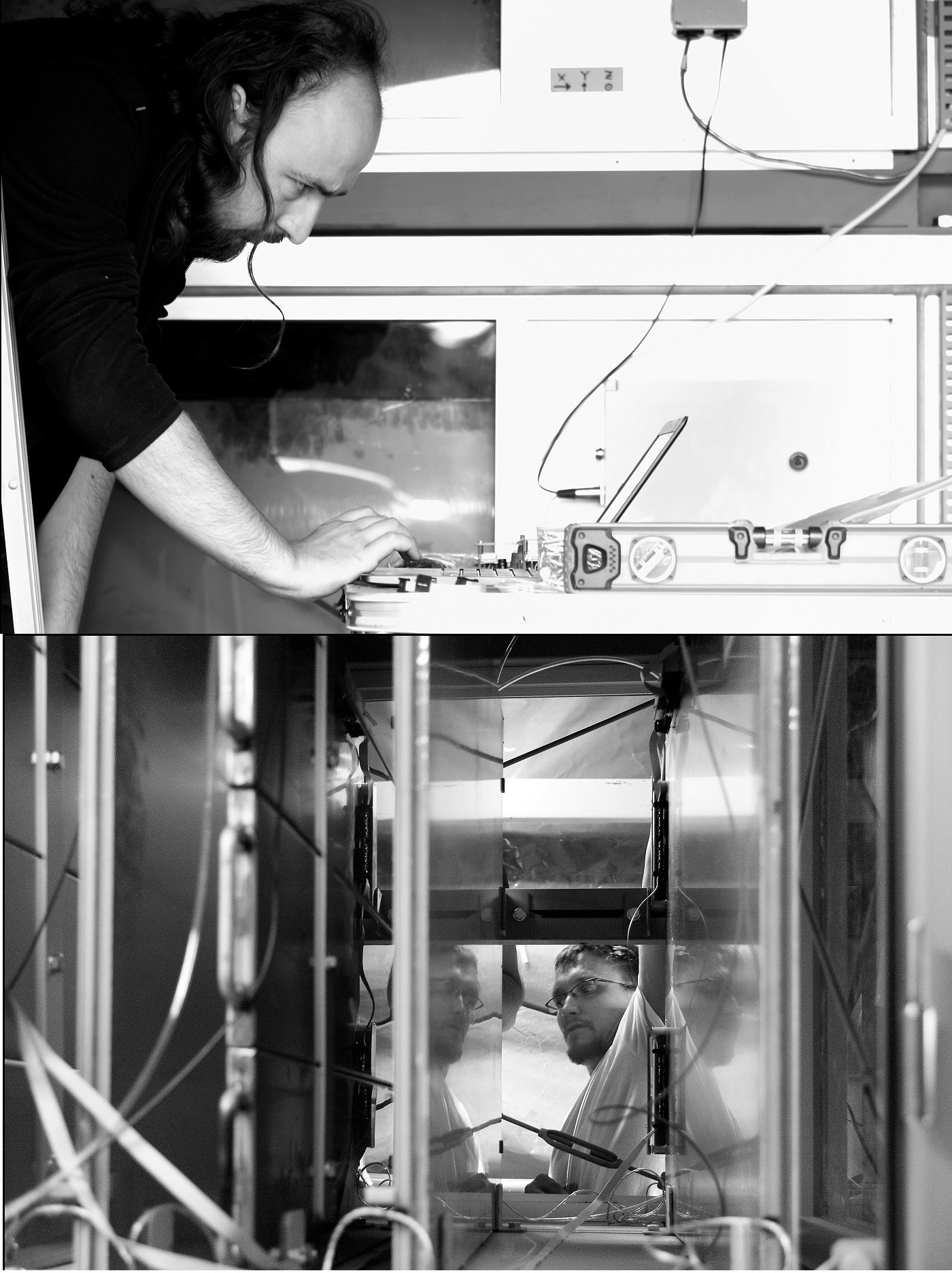ARTWORK
WSWORKSHOP
THURSDAY, 29 NOVEMBER, 13:00- SATURDAY, 01 DECEMBER, 16:00, SALA ESPOSIZIONI, ISTITUTO ITALIANO DI CULTURA TOKYO
FINE-ART MUOGRAPHERS ARTWORK PRESENTERS
 Celestial Globe (3 m in diameter),
Yuji Ichikawa (2018),
Thursday, 29 November-Saturday, 1 December.
Celestial Globe (3 m in diameter),
Yuji Ichikawa (2018),
Thursday, 29 November-Saturday, 1 December.
Apples have traditionally represented the human’s curiosity: a forbidden fruit, Newtonian apples, the Big Apple, and now muography that fulfills the human’s curiosity by disclosing mysteries hidden inside volcanoes and pyramids. Experience the principle of muography inside this globe. When you insert your head into the globe, you will experience the muon flux from the upper hemisphere towards your head in a form of scattered and reflected light. This work was created by using the traditional Japanese painting technique to bridge apples in the 21st century to the human’s basic and intrinsic curiosity.
YUJI ICHIKAWA
Born in Saitama, Japan, 1979. Yuji Ichikawa completed his master course studies in Japanese painting at Tama Art University in 2012. His solo exhibition includes, “Newton’s Garden”, GALLERY KOBAYASHI, Tokyo, Japan in 2015, “Golden Apple”, GALLERY KOBAYASHI, Tokyo, Japan in 2016, “Cosmic tree”, Mitsukoshi Ginza 7th floor Gallery, Tokyo, Japan in 2017, and the Answer From the Universe – Vision Towards the Horizons of Science and Art Through Muography, TAMA ART UNIVERSITY MUSEUM, Tokyo, Japan in 2018. He won the Gotoh Memorial Foundation Award: Young Artist Prize in 2012. HOU2018 (Phoenix) (2 m by 5 m),
Keizaburo Okamura (2018),
Thursday, 29 November-Saturday, 1 December.
HOU2018 (Phoenix) (2 m by 5 m),
Keizaburo Okamura (2018),
Thursday, 29 November-Saturday, 1 December.
The fenghuang’s body symbolizes the celestial bodies: the head is the sky, the eyes are the sun, the back is the moon, the wings are the wind, the feet are the earth, and the tail is the planets. There are a number of eyes with holes in this traditional Japanese wooden-made screen. The phoenix represents muography, the technique to image the Earth with particles originated from the Universe, and the eyes represent our new perspective to look through gigantic objects, the human’s curiosity to look through objects, and to reveal mysteries of the unseen world.
KEIZABURO OKAMURA
Born in Tokyo, Japan, 1958. Okamura completed his Doctorate at Tokyo National University of Fine Arts and Music (now Tokyo University of the Arts) in 1988. Well recognized in the world of contemporary Nihonga Japanese painting, awards include the 1987 Yamatane Museum of Art Grand Prize for Exhibition Excellence and the 1993 Most Promising Young Talent Prize in Fine Art Division of the Gotoh Cultural Award. His activities have raised his profile significantly in recent years, and in addition to a solo exhibition at The Museum of Modern Art, Kamakura & Hayama, numerous works by Okamura are held in the collections of major museums. In 2008, he won the Kaii Higashiyama Commemorative Nikkei Nihonga Grand Prize Exhibition, and is currently a professor at Tama Art University. Detector Installation,
Hifumi Miyajima (2018),
Thursday, 29 November-Saturday, 1 December.
Detector Installation,
Hifumi Miyajima (2018),
Thursday, 29 November-Saturday, 1 December.
In order to increase the active area of the recently developed system called MMOS (MWPC-based Muography Observation System), a Hungarian and Japanese joint group visited Sakurajim Muography Observatory, and installed the additional detectors. The world largest MOS is now detecting muons passing through Sakurajima volcano